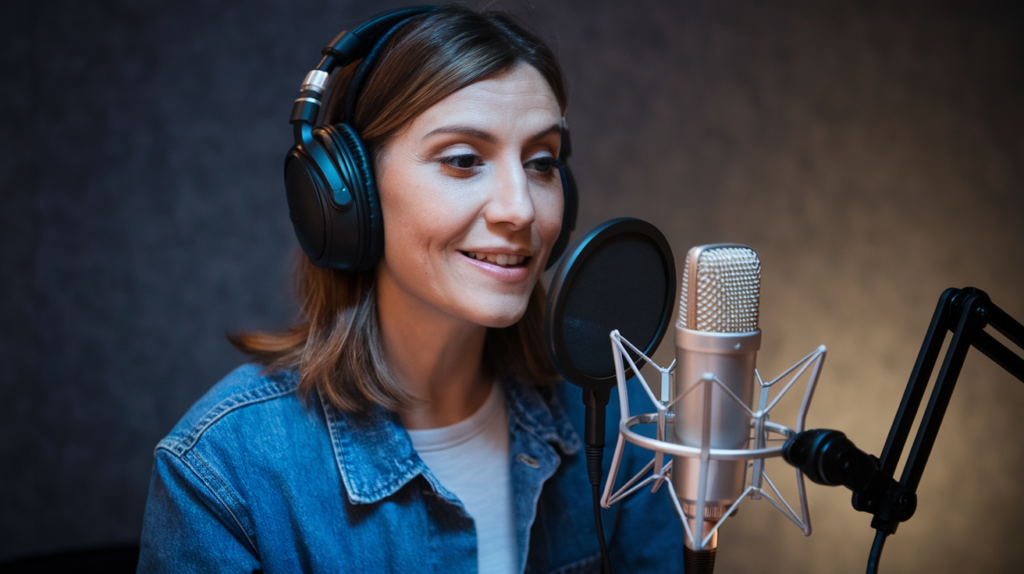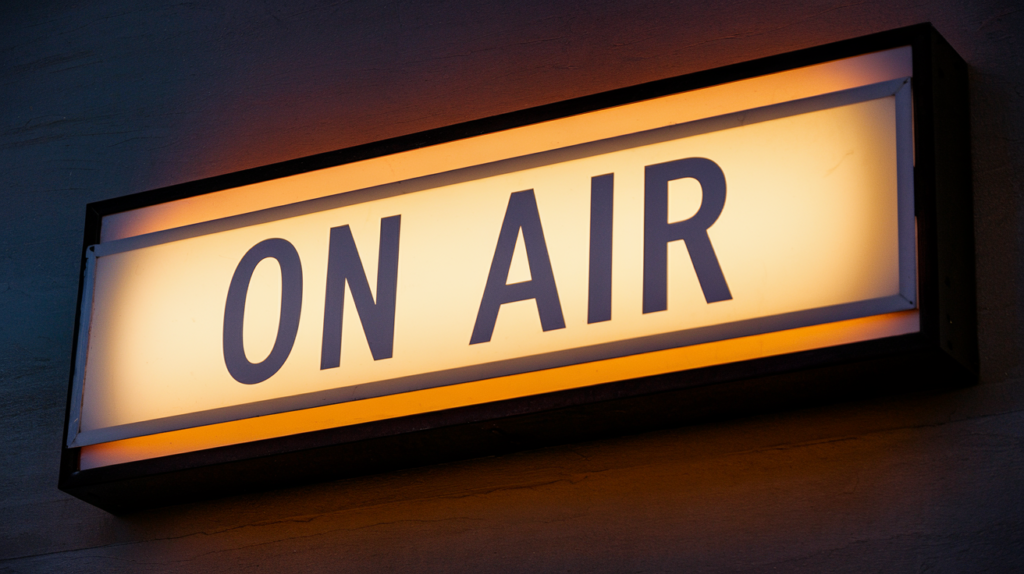Key Takeaways
- Understanding Regional Dialects: Recognizing Italy’s diverse dialects is crucial for selecting the right voice talent and ensuring authenticity in voiceovers.
- Addressing Technical Challenges: Investing in quality equipment and maintaining proper studio conditions are essential to overcoming common recording issues like poor sound clarity.
- Environmental Considerations: Choosing quieter locations and scheduling recordings during low-disruption times can significantly enhance audio quality by minimizing background noise.
- Importance of Skilled Voice Talent: Hiring experienced voice actors who can adapt their delivery style adds emotional depth, improving audience engagement with your content.
- Implementing Best Practices: Encouraging vocal warm-ups, hydration, and script familiarity among voice actors leads to improved performance and clearer recordings.
Ever wondered why Italian voiceovers sometimes miss the mark? You’re not alone. Many producers face unique recording issues in Italy that can impact the quality and authenticity of their projects. From regional dialects to technical challenges, navigating this landscape requires a keen understanding of local nuances.
Overview of Italian Voiceovers
Italian voiceovers play a crucial role in various media, from advertising to film and video games. Understanding the nuances of this market can significantly impact your project’s success.
Regional dialects present unique challenges. Italy boasts numerous dialects, each with distinct sounds and cultural meanings. Selecting the right voice artist familiar with these variations ensures authenticity and connects better with your target audience.
Technical difficulties also arise during recordings. Factors like studio quality, equipment limitations, or background noise can affect the final product’s clarity. Prioritizing high-quality recording environments helps mitigate these issues.
Choosing skilled voice talent enhances your project’s overall appeal. A seasoned voice actor brings depth and emotion to scripts, making content more engaging for listeners. Their ability to adapt their delivery style based on context adds value to any production.
When navigating Italian voiceovers, recognizing local preferences matters too. Audiences often respond better to relatable voices that reflect their experiences or culture. Collaborating with knowledgeable professionals who understand these dynamics leads to successful outcomes.
Tackling the complexities of Italian voiceovers involves careful consideration of dialects, technical aspects, and audience connection through adept voice over talent.
Common Recording Issues in Italy
Voiceover projects in Italy often face specific recording challenges that can impact the final output. Understanding these issues helps ensure high-quality results.
Technical Challenges
Technical difficulties frequently crop up during voiceover recordings. Problems like inadequate studio acoustics, outdated equipment, and poor sound isolation can diminish audio quality. Ensure your recording environment meets professional standards to avoid unwanted noise interference or echo effects. Additionally, investing in reliable microphones and audio interfaces enhances clarity and overall performance of your voice talent. Also, using proper software for editing and mixing allows you to achieve polished results that resonate with audiences.
Environmental Factors
Environmental factors play a significant role in the success of voiceovers. Urban areas may present unique obstacles, such as traffic noise or construction sounds disrupting recordings. Choosing quieter locations can greatly improve sound quality. Furthermore, local weather conditions—like rain or wind—can also affect outdoor recordings or those near windows. Always consider scheduling sessions during times when external disruptions are minimal to capture clean audio from your voice actor. Ensuring a controlled environment creates an ideal backdrop for your project, allowing the true essence of the script to shine through without distractions.
Industry Standards and Practices
Understanding industry standards is vital for producing high-quality voiceovers in Italy. You’ll want to ensure that both equipment quality and studio conditions meet professional benchmarks.
Equipment Quality
Quality equipment forms the backbone of any successful voiceover project. Using top-tier microphones, audio interfaces, and recording software significantly enhances sound clarity and overall production value. It’s essential to select gear known for its reliability and performance under various recording conditions. For instance, condenser microphones often capture nuanced vocal tones better than dynamic ones, making them a popular choice among voice artists. Investing in good headphones also allows you to monitor recordings accurately, catching issues before they escalate into costly re-records.
Studio Conditions
Studio conditions play a crucial role in achieving pristine audio quality. A controlled environment minimizes unwanted noise and echoes that can compromise your final product. Look for studios with soundproofing measures like acoustic panels or isolation booths; these features help maintain optimal recording conditions by reducing external disturbances. Additionally, consider the studio’s layout—properly arranged spaces prevent reflections that could muddy your audio track. Remember that even minor factors like air conditioning units or traffic noise can interfere with recordings; ensuring complete control over these elements leads to cleaner results every time.
By prioritizing equipment quality and studio conditions, you set the stage for success in Italian voiceovers while delivering an authentic experience tailored to your audience’s needs.
Solutions to Improve Recording Quality
Improving recording quality is crucial for effective Italian voiceovers. A few strategic solutions can make a significant difference.
Best Practices for Voice Actors
- Warm Up Vocally: Engage in vocal exercises before recording. This helps enhance clarity and reduces strain on your voice.
- Stay Hydrated: Drink water consistently to keep your vocal cords lubricated, ensuring smooth delivery.
- Understand the Script: Familiarize yourself with the material beforehand. Knowing the context aids in delivering an authentic performance.
- Control Breathing: Practice breath control techniques to maintain a steady flow and avoid unwanted pauses during recordings.
- Use Proper Microphone Technique: Position yourself appropriately relative to the microphone to capture optimal sound without distortion.
Recommendations for Studios
- Invest in Quality Equipment: Use high-quality microphones and audio interfaces that capture sound accurately, reducing background noise interference.
- Ensure Soundproofing: Implement soundproofing measures in your studio space to minimize external noises that can disrupt recordings.
- Optimize Room Acoustics: Utilize acoustic panels or foam to absorb echoes and create a clean recording environment free from reverberation.
- Maintain Consistent Temperature and Humidity: Keep the studio climate stable; extreme changes can affect both equipment performance and voice quality.
- Conduct Regular Equipment Checks: Test equipment frequently to ensure everything operates smoothly, preventing technical issues during sessions.
By incorporating these practices and recommendations into your workflow, you’ll enhance the overall quality of Italian voiceovers while achieving professional-sounding results that engage audiences effectively.
Conclusion
Navigating the landscape of Italian voiceovers demands a keen understanding of regional nuances and technical excellence. By prioritizing high-quality equipment and creating optimal recording environments you can significantly enhance audio clarity and authenticity.
Working with skilled voice talent who are familiar with local dialects is essential for connecting with your audience. Remember to address environmental factors that might affect sound quality, ensuring your recordings meet professional standards.
By focusing on these key elements you’ll be well-equipped to tackle the challenges in Italian voiceover projects, ultimately delivering impactful results that resonate with listeners. Embrace these practices to elevate your work and achieve the authenticity today’s audiences expect.
Frequently Asked Questions
What are the main challenges faced by producers of Italian voiceovers?
Producers in Italy face challenges such as regional dialects that can affect authenticity and technical difficulties, including inadequate studio conditions and equipment limitations. Understanding local nuances is crucial for successful voiceover projects.
Why is selecting the right voice artist important for Italian voiceovers?
Choosing a skilled voice artist familiar with regional dialects enhances authenticity and helps connect with the audience. Experienced actors can convey depth and emotion, making the project more relatable.
How do technical difficulties impact Italian voiceover quality?
Technical issues like poor studio acoustics, outdated equipment, and urban noise can significantly diminish audio quality. A high-quality recording environment is essential to ensure clear sound capture.
What equipment is recommended for producing high-quality Italian voiceovers?
Investing in top-tier microphones, reliable audio interfaces, and professional recording software is essential for achieving clarity in recordings. Quality equipment directly influences the overall production value.
How can studios improve their recording conditions for better results?
Studios should focus on soundproofing measures, optimizing room acoustics, maintaining consistent temperature and humidity levels, and conducting regular equipment checks to minimize unwanted noise during recordings.
What best practices should voice actors follow during recordings?
Voice actors should warm up vocally, stay hydrated, understand scripts thoroughly, control their breathing, and use proper microphone techniques. These practices contribute to clearer audio delivery.
How can producers address environmental factors affecting recordings?
To manage environmental factors like urban noise or weather conditions, producers should strive to create controlled recording settings. This may involve scheduling sessions at quieter times or investing in soundproofing solutions.







